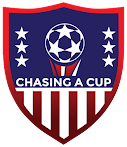

USMNT
Exploring Dual Citizenship in U.S. Soccer: The Rise of Dual Nationals in the USMNT
Published
7 months agoon
Thomas Deschaine (@uskeeper on X and us_keeper on Instagram)
Dual-national players have had a significant impact on U.S. soccer, bringing a range of styles and influences that have enhanced the team’s level of play. These players often possess the technical skills, tactical awareness, and experience that make them valuable assets to the U.S. national team.
The U.S. Soccer Federation (USSF) has been active in recruiting dual nationals, recognizing the growing importance of players born or raised abroad who have ties to the country. As globalization continues, it’s likely that the U.S. will continue to benefit from players who have the option of representing multiple nations.
The 1990s were a pivotal decade for the USMNT, marked by the strategic inclusion of dual-nationals that significantly bolstered the team’s talent pool. This influx of players with diverse international backgrounds allowed the team to compete at a higher level and achieve success previously out of reach. Today, the USMNT faces similar challenges in terms of depth and quality, leading many to wonder if a new wave of dual-nationals will emerge ahead of the 2026 World Cup, potentially reshaping the team’s future prospects.
Here’s a brief history of dual-national players in U.S. soccer:
Early History (Pre-1990s)
Dual-national players existed in the early years of U.S. soccer, there was no distinct “culture” of dual nationals as we know it today. In the early years, the U.S. was not a global soccer power, and many of the players had connections to other countries, but they were not as visible or influential as they would become in the coming decades.

Bert Patenaude (USA/Canada/France) – Scored the first hat-trick in FIFA World Cup history in 1930.
Aldo Donelli (USA/Italy) – Scored all four U.S. goals in a 1934 World Cup qualifier against Mexico.
Joe Gaetjens (USA/Haiti) – Scored the historic game-winning goal against England in the 1950 World Cup but later disappeared in Haiti under Duvalier’s regime.
Frank Borghi (USA/Italy) – Goalkeeper for the U.S. in the 1950 World Cup, born to Italian immigrants.
Harry Keough (USA/Ireland) – Defender on the 1950 World Cup squad, of Irish descent.
Walter Bahr (USA/Germany) – Midfielder and key player in the 1950 World Cup, of German descent.
Werner Roth (USA/Germany/Yugoslavia) – Captain of the U.S. team in the 1970s, born in Yugoslavia to German parents.
The Rise of Dual Nationals
In the mid to late 1980s and 1990s, the USMNT made a concerted effort to identify and recruit quality dual-nationals, significantly strengthening the team as they worked to assemble their best squad for the 1994 World Cup, which they were set to host.
Here is a look at some of the most prominent dual-national players for the USMNT during the 1980s and 1990s.

Hugo Pérez-20 (1984): Pérez held citizenship for both El Salvador and the United States. Pérez became a key player in the USMNT’s development during the late 1980s and early 1990s.
Paul Caligiuri-20 (1984): Caligiuri held two citizenships, and his Italian heritage gave him the option to play for Italy. Instead, he chose to represent the U.S. at the international level and became a key figure in the team’s rise in the late 1980s and early 1990s. His commitment to the U.S. national team was crucial in helping shape the team’s success in that era.
Mike Windischmann-18 (1984): Windischmann is a clear example of a dual-national player who had the option to represent either the U.S. or Germany, given his family’s roots. Ultimately, he chose to play for the U.S. national team, and his contributions helped pave the way for U.S. soccer’s future success.
John Harkes-20 (1987): Harkes, with Scottish heritage through his parents, was eligible for dual citizenship. His father, Jim, hailed from Dundee, Scotland.
Jeff Agoos-19 (1988): Agoos holds citizenship in both the United States and Switzerland, where he was born. Despite his Swiss heritage, he chose to represent the USMNT and became one of the country’s most reliable defenders during his international career.
Marcelo Balboa-20 (1988): Balboa was of Mexican descent and had the option to represent Mexico; he is considered a dual-national who chose to represent the United States at the international level. His decision to play for the U.S. was a significant one, and he became one of the prominent figures in U.S. soccer during the 1990s.
Tab Ramos-21 (1988): Ramos holds both United States and Uruguayan citizenship. Ramos had many great moments for the USMNT and played a pivotal role in shaping the development of American soccer during the 1990s.
Fernando Clavijo-33 (1990): Clavijo is a dual-national because he held citizenship in both Uruguay and the United States. Despite his strong connection to Uruguay, he chose to represent the U.S. Men’s National Team during his playing career, where he became an important figure for the national team during the 1980s and early 1990s.
Earnie Stewart-21 (1990): Stewart was born in the Netherlands to American parents and played for both the Netherlands youth teams and the USMNT. Stewart chose to represent the U.S. and had a successful career, becoming one of the most well-known dual nationals in U.S. soccer history.
Thomas Dooley-30 (1992): Dooley is an excellent and notable example of a dual-national player, holding German and U.S. citizenship. He played for the U.S. Men’s National Team despite his German heritage, making significant contributions to the U.S. team’s success in the 1990s. His decision to represent the U.S. was pivotal for the team, especially during the 1994 World Cup and the subsequent years of growth in American soccer.
Roy Wegerle-28 (1992): Wegerle being born and raised in South Africa, became a U.S. citizen in 1991 and represented the United States in the 1994 and 1998 World Cups.
Claudio Reyna-20 (1994): Reyna was able to obtain a Portuguese passport through his parents. The former USMNT captain was a key figure in four World Cup squads, appearing in three of them throughout his illustrious career.
Predrag Radosavljević-33 (1996): Born in Serbia, Preki made his USMNT debut in 1996 at the age of 33, making him one of the oldest dual nationals to earn his first cap. Although he played in just 28 matches for the U.S., Preki earned a reputation as a “super sub,” often coming off the bench to score and assist in crucial second-half goals for the team.
The Future of Dual Nationals
With the 2026 World Cup just 14 months away and set to return to U.S. soil, will U.S. Soccer and Mauricio Pochettino look to bolster the squad by recruiting additional dual-national talent? With a fully healthy player pool, roster spots on the USMNT are limited. Strengthening the squad’s depth could be a crucial factor in building a competitive team capable of making a deep run on home soil.

Lucho Acosta-30 Reports suggest that Acosta is expected to obtain his U.S. citizenship in early 2025. If he joins the USMNT, he would be one of the older dual-nationals to do so, as he turns 31 at the end of May. His experience and leadership could provide valuable depth to the squad.
Noahkai Banks-18 Banks, recently named to the USMNT’s 60-man provisional roster for the March 2025 Nations League, is a promising teenage center-back who could provide much-needed depth to the squad’s backline.
Nathaniel Brown-21 Brown, a German left-back, could provide the USMNT with much-needed depth at the position but would need to complete a one-time switch to represent the American squad.
Noel Buck-19 Buck, who recently featured for England’s U-21 team, would need to file a one-time switch to rejoin the USMNT after reportedly being mishandled by the previous manager. With the 2026 World Cup approaching, it will be up to Matt Crocker and Mauricio Pochettino to persuade him to return to the American setup.
Cole Campbell-19 Campbell, another dual-national named to the USMNT’s 60-man provisional roster for the March 2025 Nations League, spoke with former USMNT dual-national Aron Johannsson, who is trying to convince him to switch his allegiance from Iceland to the United States.
Anrie Chase-20 Defender Anrie Chase, already competing at a high level in both the Bundesliga and Champions League, previously represented Japan’s U-23 team in 2021 and 2022 before making a single appearance for the U-23 USMNT in October 2023. At the moment, Chase appears more focused on his club career with VfB Stuttgart than on his international future. However, hopefully, Matt Crocker and Mauricio Pochettino will keep the lines of communication open as the USMNT continues to monitor his progress.
Damion Downs-20 Down, the third player on this list to be named to the USMNT’s 60-man provisional roster for the March 2025 Nations League, has been in excellent form with 10 goals and 5 assists in the 2. Bundesliga. His goal-scoring ability adds valuable depth to the USMNT’s striker pool.
Luca Koleosho-20 Koleosho’s club form has dipped in recent months, with playing time becoming increasingly limited. However, as an eligible dual-national, he remains a potential option for the USMNT, which is in need of added depth on the wings.
Conclusion
Dual-national players have played a critical role in the development of U.S. soccer, and this trend is likely to continue in the future. With global scouting networks and more players born abroad to American parents, the U.S. has the opportunity to draw from a diverse talent pool, giving them an advantage in international competitions.
Many believe that dual-nationals only choose the USMNT because they aren’t good enough to represent other countries. While it’s true that some players—past, present, and future—may not have a deep-rooted passion for the red, white, and blue, that doesn’t mean all dual-nationals lack pride in representing the United States. Until FIFA revises its rules regarding eligibility, the USMNT will continue to actively recruit and promote top talent—regardless of background—in its effort to build the strongest possible team.
You may like
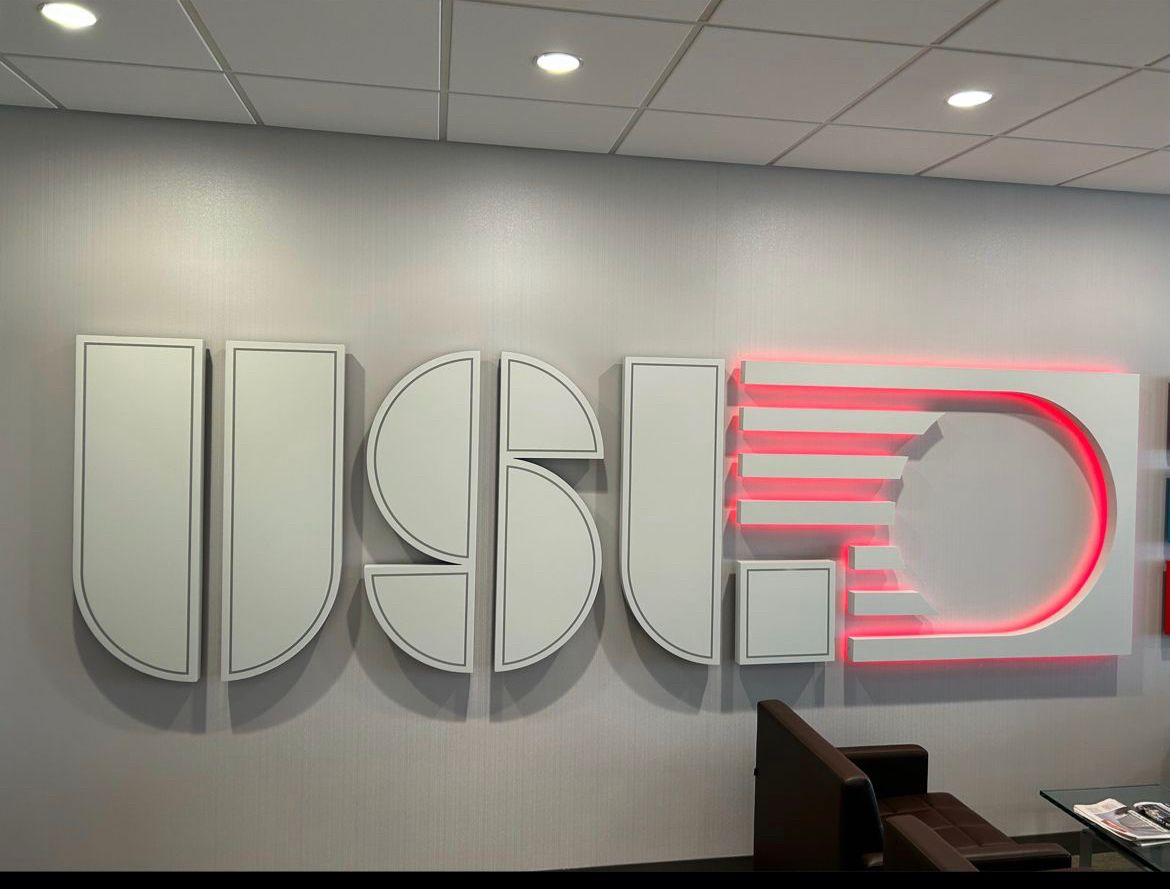
USL made national headlines when they announced on February 13th, 2025, their plans to launch a Division One league, followed by the announcement of promotion/relegation on March 19th for the new Division One league, the Championship, and League One. If sanctioned by US Soccer, USL Division One would be of equal status to MLS and compete for the best major soccer league in the U.S. The implementation of promotion/relegation in the USL would become the first in the U.S. and test the question asked for many years, “would pro/rel work in the U.S.” USL HQ informed the public that they planned to have the inaugural season of Division One during the 2027-2028 season with promotion/relegation beginning in 2028.
Until November 3rd, with the announcement of Tony Scholes being hired as the President of the Division One, only three teams have applied for membership to the inaugural season of Division one: Louisville City, North Carolina FC (who announced at the time of the Scholes news that they would fold until the launch of Division One), and Pittsburgh Riverhounds. There has been a rapid expansion of teams in the already existing leagues since the two announcements. Teams joining League One are: Fort Lauderdale FC (2026 debut), New York Cosmos (2026 debut), Port St. Lucie SC (2027 debut), Sporting Cascades FC (2026 debut), and Rodeo FC (2027 debut). Fort Wayne FC and Sarasota Paradise would also be joining League One from League Two (2026 for both teams). For the Championship, Reno, NV will once again have a team planned for a 2027 debut. Along with those teams, USL is actively working to expand to other markets. The markets and partners they are looking at are Brevard County, FL (Space Coast Pro Soccer), Riverside, CA (Riverside Pro Soccer), Brownsville, TX (City of Brownsville), Winter Garden, FL (Central FL Pro Soccer), Santa Rosa, CA (City of Santa Rosa), and Pensacola, FL (City of Pensacola).
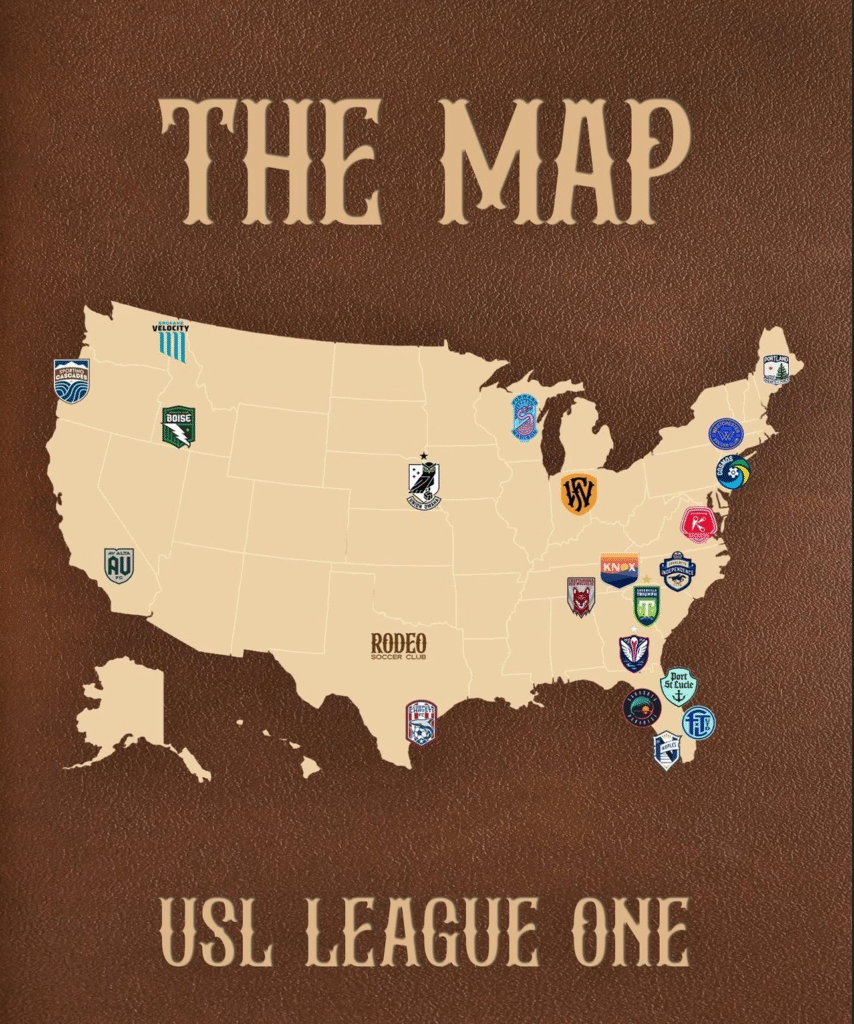
Along with these recently announced teams and partnerships, USL has teams joining the organization just in time for promotion/relegation that were announced prior to the February and March news. Starting with League One, these teams include: Corpus Christi FC (2026 debut) and Athletic Club Boise (2026 debut). As for the Championship, they will be adding Brooklyn FC (2026 debut), Sporting Jax (2026 debut), Atlético Dallas (2027 debut), Milwaukee Pro Soccer (TBD), USL Pro Iowa (TBD), Buffalo Pro Soccer (TBD), and Ozark United FC (2027 debut), while Santa Barbara Sky FC (2027 debut) would replace Memphis 901 FC.
Other than that, news on the Division One and promotion/relegation had been quiet until USL snatched Tony Scholes from the English Premier League. Tony Scholes will be the President of Division and help with the implementation of promotion/relegation. Scholes served as the chief football officer of the EPL and will join USL at the end of the EPL season. As of November 15, 2025, USL Division One has not been sanctioned as a division one league by US Soccer. The hiring of Scholes indicates that they are confident this new league will get approved or they have already been told it will, behind closed doors. The fact that we have not heard news on what the promotion/relegation format would be, and Scholes task would be to help implement it could mean that USL has not come to a decision on one. Since we do not have any ideas on what the format could be, I want to provide a possible option that they could go with.
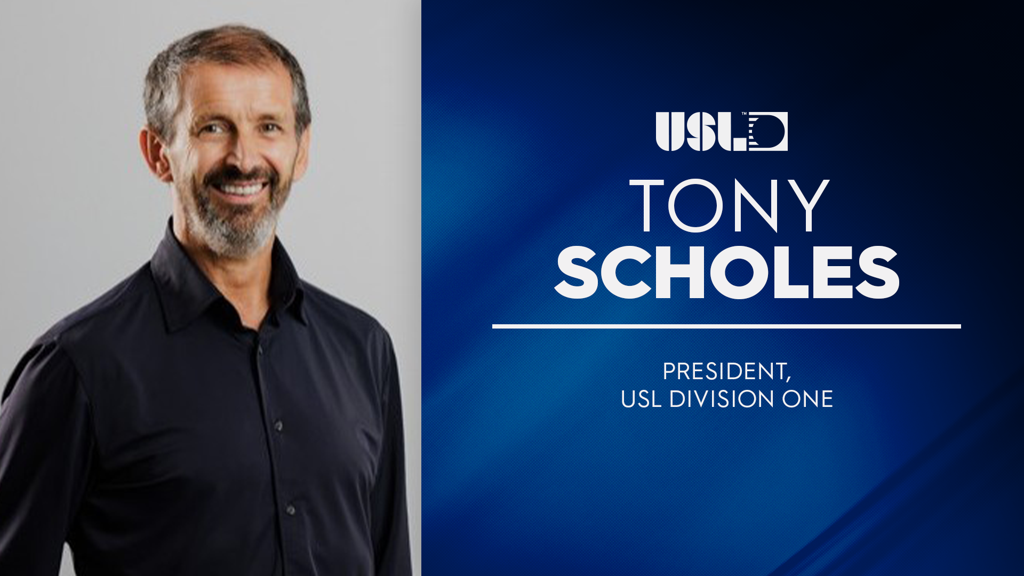
One of the biggest questions people have had since the USL announced promotion/relegation was how they would tie it to the playoffs. There is an option they could do, but it would result in only having one playoff. USL would have a playoff for Division One, but they would eliminate the concept for the Championship and League One. It might not be the most popular idea here in the U.S., but the main goal for the lower leagues is to get promoted, not to win a trophy. They would retain the league title for those two leagues with the winner being the team with the most points at the end of the season, just like how it is in the European leagues. The purpose is to create fairness for the top performing team(s) in the two lower leagues and reduce confusion. If there is a need for a playoff format, they could adopt the format the Bundesliga uses where the 16th best team in the first division and the 3rd best in the second division face-off in a two-leg match to see who would be in the first division the following season. The other option is the Championship concept, where the teams who finished 3rd through 6th in the table compete in a promotion playoff. The semi-finals are two-leg matches while the final is a single-leg match. The winner is promoted to the EPL. The execution of promotion/relegation must be done perfectly to retain fans, gain fans, prevent confusion, and be entertaining.
USL already has a division one league with their women’s Super League, who is competing against the NWSL. Currently, the S League has only nine teams (Brooklyn FC, Carolina Ascent FC, Dallas Trinity FC, DC Power FC, Ft. Lauderdale United FC, Lexington FC, Spokane Zephyr FC, Sporting Jax, and Tampa Bay Sun FC) to the NSWL’s 14 teams (3 teams in the works). The Super League will be adding an additional nine teams (Athletic Club Boise, New York Cosmos, Ozark United FC, Buffalo Pro Soccer, Chattanooga Red Wolves FC, Forward Madison FC, Indy Eleven, Oakland Soul SC, and USL Palm Beach) with all but three to have their inaugural season to be determined. What makes the S League unique from the rest of the soccer leagues in the U.S. is that they use a fall-summer schedule. Competing against a top five women’s league in the world is a tall ask, but it shows the ambitions of USL.
They are also willing to take risks by voting to pass promotion/relegation for the men’s league and have a fall-summer schedule for the S League. If the S League schedule format proves successful, it stands to reason that they would move the men’s leagues to the same schedule. It would also avoid the organization from having to fight MLS for viewership when the leagues are in play, especially when they launch a direct rival and are at their most ambitious point in their history. The same can be done for the S League if promotion/relegation is successful for the men. USL can start establishing lower women’s leagues and introduce promotion/relegation to the women’s game here in the U.S.
Many would say USL still stands no chance at competing against MLS, even with promotion/relegation and having a division one league. That is the case when you look at the quality of the players is finance, but that is the reason why the USL made these decisions based on the reports prior to the announcements and afterwards. Promotion/relegation and the introduction of a division one league could see an increase in investors. We are already seeing that with the likes of Gio Reyna joining Fort Lauderdale as an investor, BellTower Partners investing into USL, Sofia Huerta and Kasey Keller joining the Athletic Club Boise ownership group, and the Chickasaw Nation becoming an investor of the OKC for Soccer just this year alone. Then there is the expansion fee for MLS, MLS Next Pro, and the USL leagues. MLS charges an astounding $500 million! Yes, the money is used to construct a proper stadium, acquire players, etc., but at this point it will discourage many from purchasing a franchise license. MLS currently only has two leagues and one of them is advertised as a development league to prepare for MLS. The expansion fee for an independent team to join MLS Next Pro is unknown, but Sports Business Journal reported in 2024 that it is significantly cheaper than the USL Championship. The fee to join the USL Championship is $20 million while League One is only $5 million. These two fees are significantly lower than MLS and that will be more appealing to potential owners, but unlike the MLS fee, it is not enough for a stadium, training grounds, and players. As for what the fee is to join USL Division One, that is unknown at the moment.
I highly recommend reading the ESPN article by Jeff Carlisle titled “Will USL’s Move to Pro-Rel Change U.S. Soccer, Threaten MLS?” In there, Carlisle discusses the reasons behind the decision and that it is mostly financial. For example, a USL spokesperson said they expect to see an increase in commercial revenue by 15% to 30% due to promotion/relegation. Also, the former owner of San Diego Loyal lost $40 million in 4 seasons. As for the reaction from MLS, we have not heard one yet. The only possible reaction we have seen from them is what the former MLS Next Pro president, Charles Altchek, told to Backheeled back on March 6th, 2025. In the interview, he told them they aim to have 40 to 50 teams and a possible second league with one of the MLS Next Pro leagues being a second division, putting it in direct competition with USL Championship. The biggest question is, whichever league that is, can compete for fans? Due to the Apple TV deal, we currently do not have the ratings of MLS Next Pro. The closest idea we have is the attendance, which is 5,580 for USL Championship per match to MLS Next Pro’s 3,361, according to Transfermarkt. Unlike the attendance, the viewership for USLC is much higher where the season premiere match had 453,000 viewers. MLS Next Pro’s massive expansion plan announcement date was either a coincidence, or MLS got word USL’s promotion/relegation implementation with the division one news, and this was their response. I will let you come to your own decision.
It seems, as of right now, it appears MLS will sit back and wait to see how the USL’s Division One and promotion/relegation will play. Division One and promotion/relegation will either be successful for USL and lead them to the financial success they are hoping for or lead to the possible collapse of USL. American sports fans are not the only ones keeping their eyes on USL now, but the rest of the soccer world is after their two massive news. The coming years are going to be exciting times for American soccer!
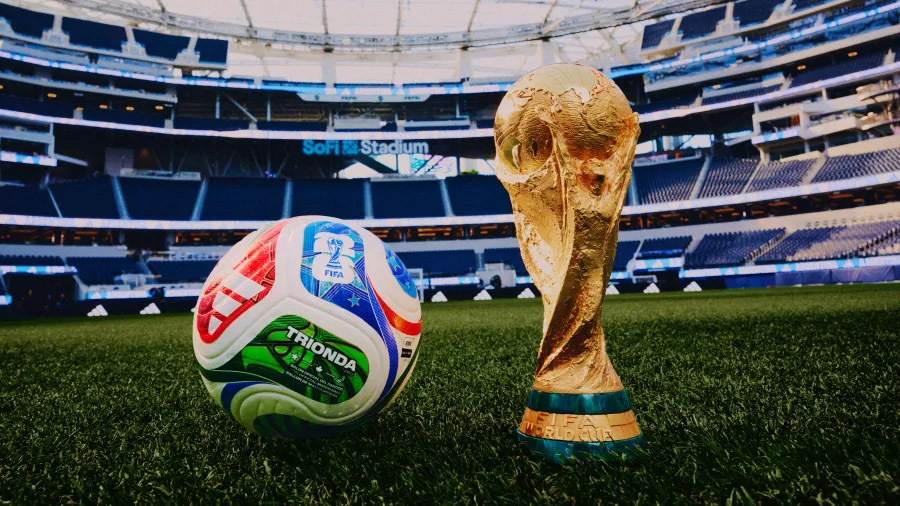
From Maradona to Messi: A Quick Look at World Cups 1986–2022
Thomas Deschaine (@uskeeper on X and us_keeper on Instagram)
A quick look back at the last ten World Cups reveals how the world’s greatest sporting event has evolved and grown through the decades. With over 200 days until the 2026 FIFA World Cup kicks off, here’s a high-level recap of the tournaments that shaped its legacy, and a glimpse of what’s next.
1986 – Mexico
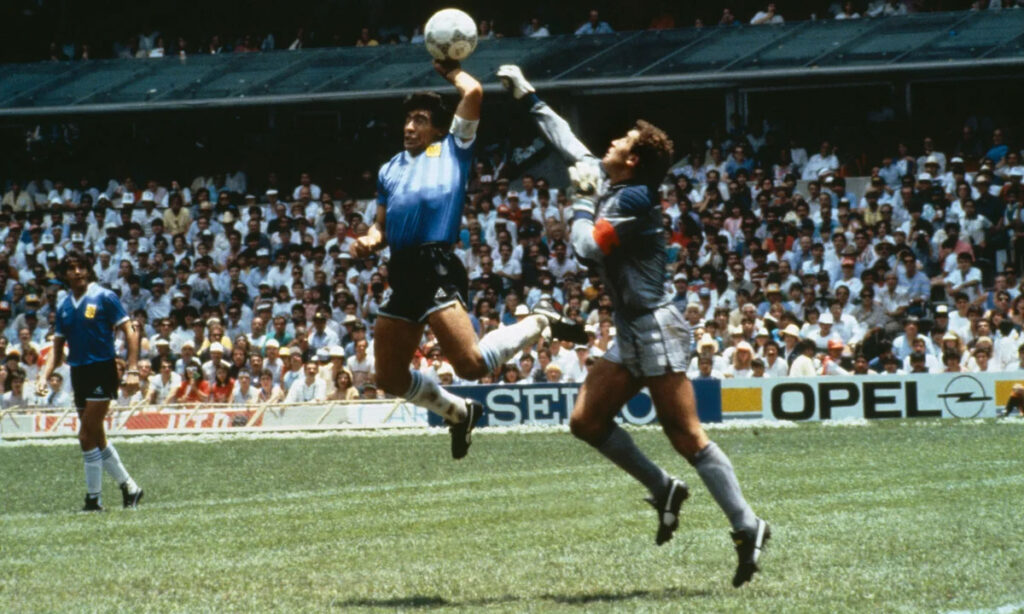
Diego Maradona delivered a World Cup for the ages, scoring both the “Goal of the Century” and the infamous “Hand of God” in the same match, then leading Argentina past West Germany to claim their second World Cup title.
1990 – Italy

The USA returned to the World Cup after a 50-year absence in what became the lowest-scoring tournament in history, as West Germany edged Argentina 1–0 on a late penalty. It marked West Germany’s final World Cup before reunification.
1994 – United States
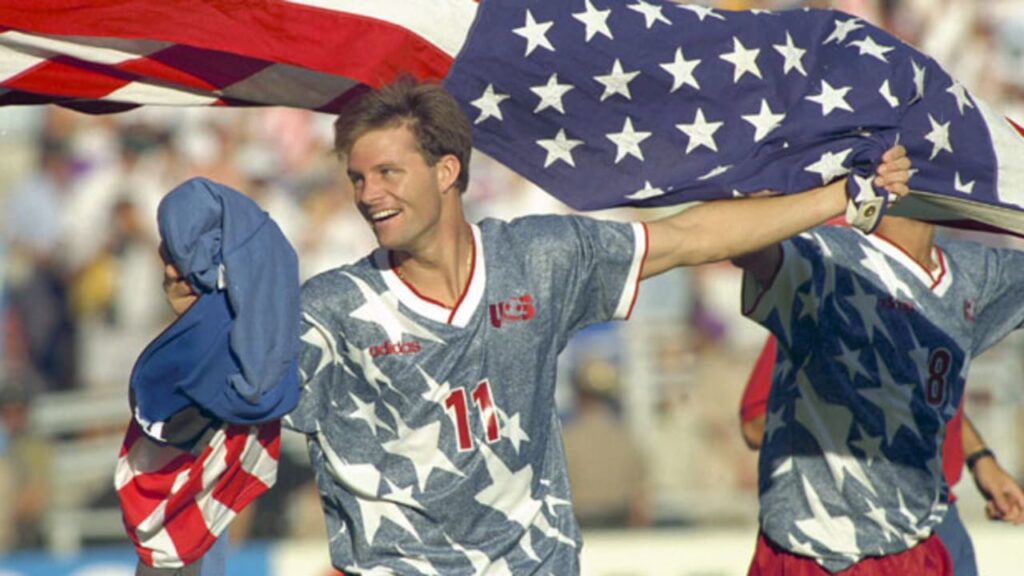
The USA hosted its first-ever World Cup, setting all-time attendance records as Brazil defeated Italy in the tournament’s first final decided by a penalty shootout in front of the largest crowds in US since the 1984 Olympics.
1998 – France
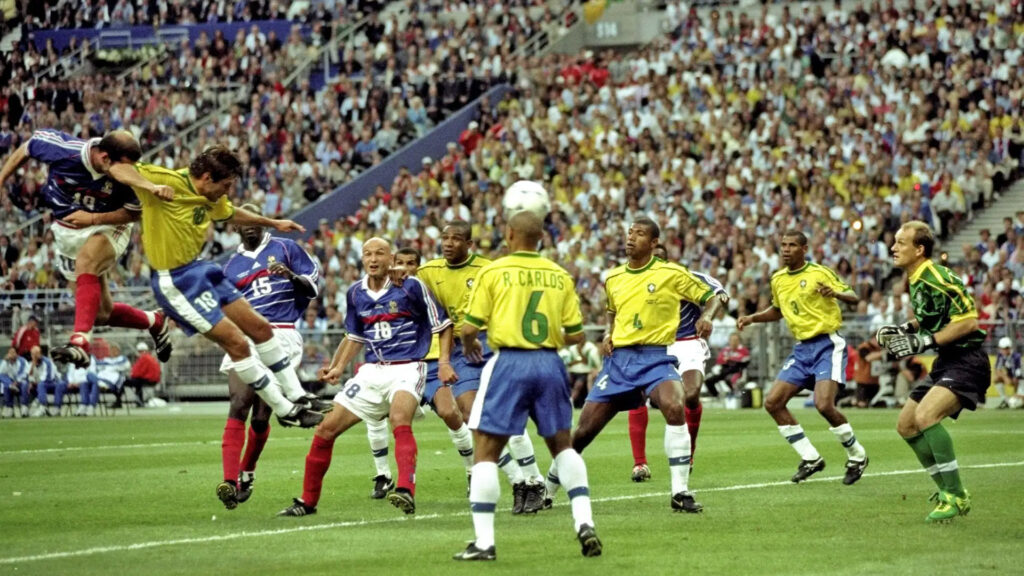
FIFA’s first 32-team World Cup saw host nation France capture its first-ever title, becoming the seventh country to win the trophy. Led by Zinedine Zidane triumphed on home soil with a commanding victory over defending champions Brazil.
2002 – South Korea/Japan
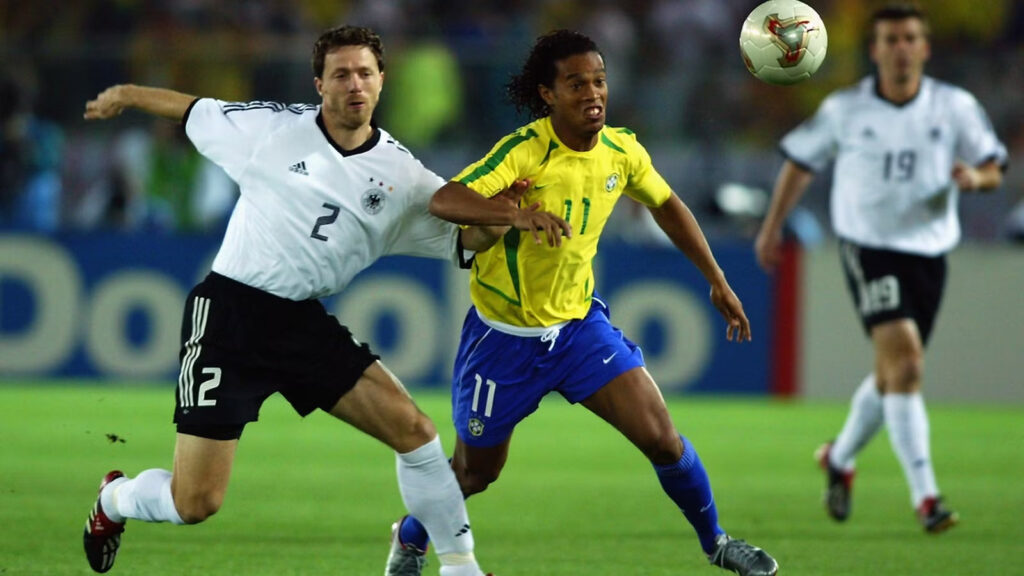
The first World Cup with co-hosting nations saw South Korea stun many by reaching the semifinals, while Brazil claimed their fifth title, powered by Ronaldo’s two goals in the final against Germany.
2006 – Germany

Germany came up short on home soil, losing in extra time to eventual first-time finalist Italy in the semifinal. Italy went on to claim its fourth World Cup, edging France on penalties in a final forever marked by Zidane’s infamous headbutt in extra time.
2010 – South Africa
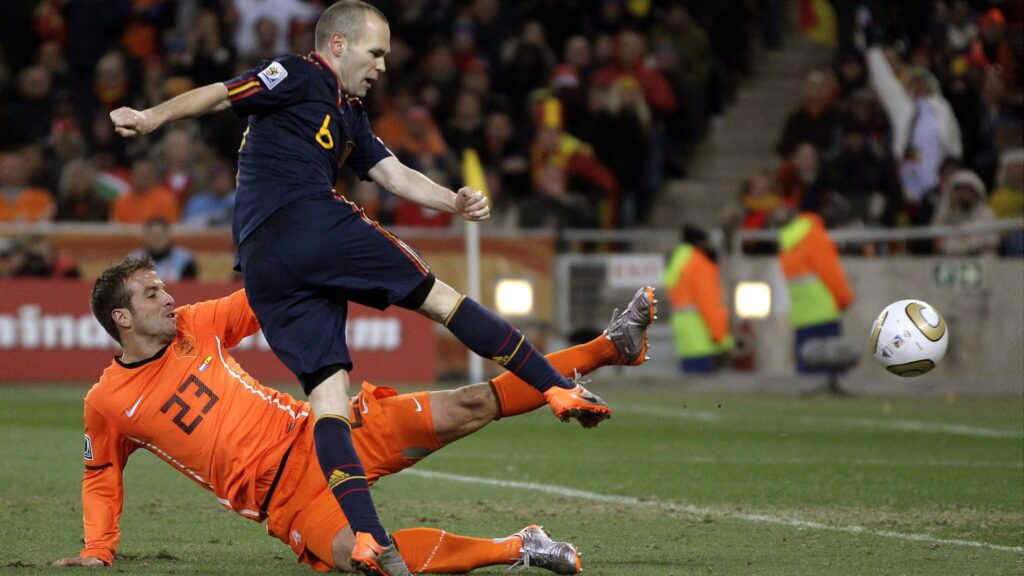
The first World Cup hosted by a CAF nation, South Africa, saw the host nation become the first ever to fail to advance past the group stage. Meanwhile, Spain captured their first World Cup, showcasing their tiki-taka mastery and defeating the Netherlands in extra-time with Andrés Iniesta’s decisive goal.
2014 – Brazil
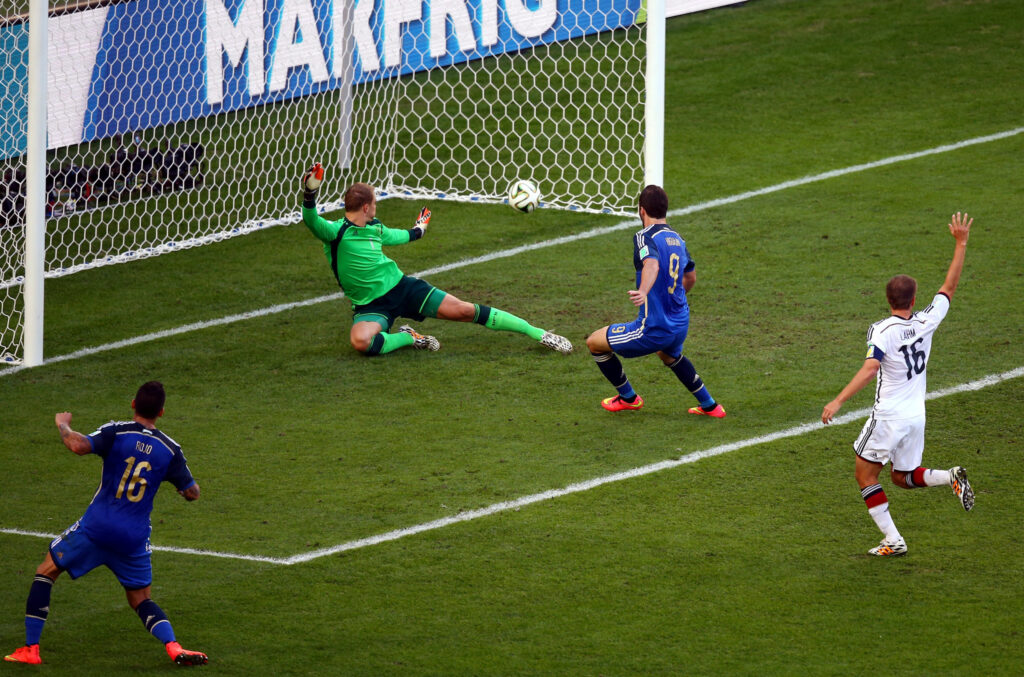
Host nation Brazil reached the semifinals on home soil but suffered a shocking 7–1 defeat to Germany and then fell 3-0 to the Netherlands in the third-place match. Germany went on to defeat Argentina in extra time, with Mario Götze scoring the decisive goal, while Lionel Messi claimed the Golden Ball as the tournament’s best player.
2018 – Russia
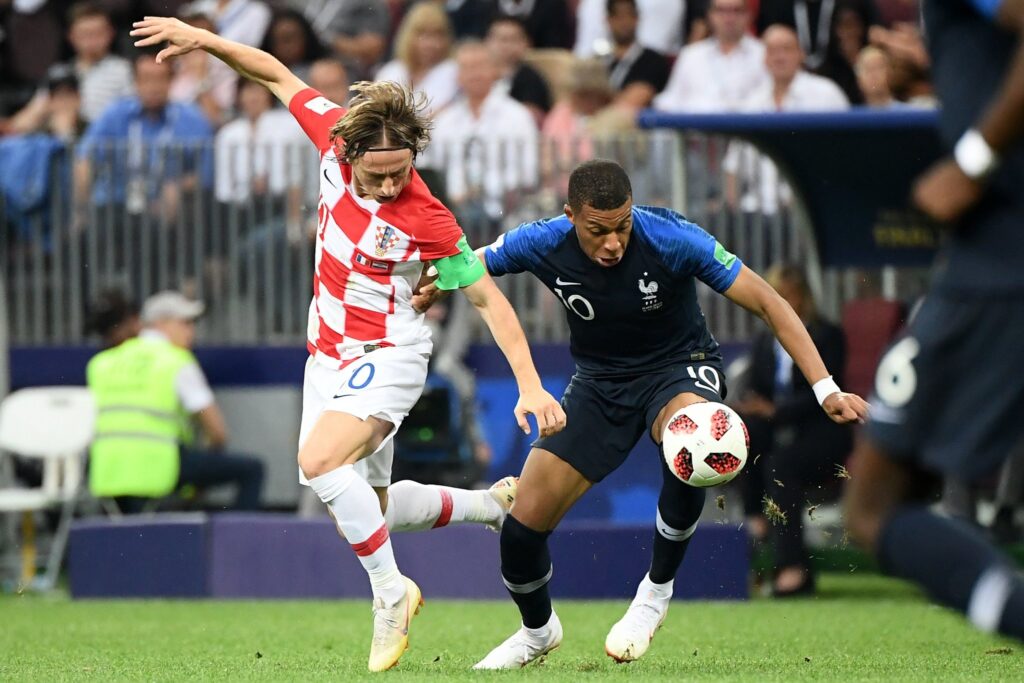
France’s golden generation, spearheaded by tournament Best Young Player Kylian Mbappé, captured their second World Cup title with a thrilling 4–2 victory over Croatia, led by Golden Ball winner Luka Modrić.
2022 – Qatar

The 2022 World Cup, overshadowed by controversies over migrant worker treatment and extreme heat, which pushed the tournament to November and December, ultimately delivered a historic finale. Lionel Messi achieved crowning glory as Argentina triumphed on penalties in a thrilling 3–3 final against France, highlighted by Kylian Mbappé’s hat-trick.
2026 – United States/Mexico/Canada
The 2026 World Cup will feature a major expansion from 32 to 48 teams and, for the first time ever, be hosted by three nations. Mexico will make history as the first country to host matches in three different World Cups, while the United States becomes the sixth nation to host at least twice. What unforgettable moments will define this landmark tournament?
USMNT
One Home or Many? The Debate Over a Primary Venue for U.S. Soccer
Published
1 month agoon
October 16, 2025
Thomas Deschaine (@uskeeper on X and us_keeper on Instagram)
The logics of the United States make it almost impossible for the USMNT or USWNT to have a primary venue to play all of their home matches but a trend of playing in a handful of stadiums has been developing over the last couple of cycles. US Soccer says there are specific factors behind where matches are played, some make sense, while others come across as lazy or lacking creativity.
If and when Major League Soccer aligns with the FIFA calendar and observes international breaks, more MLS stadiums could become available for matches. While not all MLS venues currently feature natural grass, US Soccer has indicated they would be willing to invest in installing grass, though at a cost of around $500K and with potential concerns about surface reliability.
Global Approach to Scheduling
Many of the top-tier international teams play their World Cup qualifiers and other critical matches in a primary venue or two. Here’s a sample of some of those countries and generally where they play based on my research.
Here are some of the more notable nations that play nearly all of their home matches at a single venue, a setup made practical by their smaller size and simpler logistics, which also makes it easier for fans.
Germany and Spain are known for rotating their non-critical home matches across multiple venues.

Argentina-Estadio Monumental (River Plate)
Belgium– King Baudouin Stadium (Brussels)
Colombia-Estadio Metropolitano Roberto Meléndez
England-Wembley Stadium
France– Stade de France (Saint-Denis, near Paris)
Italy-Stadio Olimpico
Northern Ireland-Windsor Park (Belfast)
Norway-Ullevaal Stadion (Oslo)
Portugal– Estádio da Luz (Lisbon)
Republic of Ireland-Aviva Stadium (Dublin)
Scotland-Hampden Park (Glasgow)
Uruguay-Estadio Centenario
Wales-Cardiff City Stadium
What’s in a location?
Here’s a look at the past few cycles, highlighting the USMNT’s home matches and the venues they’ve used. While US Soccer has clarified that they don’t control Gold Cup or Nations League venue selection, a point still under debate, they do manage the locations for Friendlies and World Cup qualifiers and continue to review and adjust those choices.
2026 Cycle (Matches Scheduled Through the end of 2025) – 46 Home Matches – 30 unique cities
So far, half of the USMNT’s home matches in the 2026 cycle have been held across eight venues. Only two more windows, March and May/June, remain for Friendlies before the 2026 World Cup.
- 4-AT&T Stadium, Arlington, Texas
- 4-Energizer Park, previously CityPark, St. Louis, Missouri
- 4-Q2 Stadium, Austin, Texas
- 3-Inter&Co Stadium (previously Orlando City Stadium and Exploria Stadium, Orlando, Florida
- 2-Allegiant Stadium, Paradise, Nevada
- 2-Geodis Park, Nashville, Tennessee
- 2-Rentschler Field, East Hartford, Connecticut
- 2-TQL Stadium, Cincinnati, Ohio
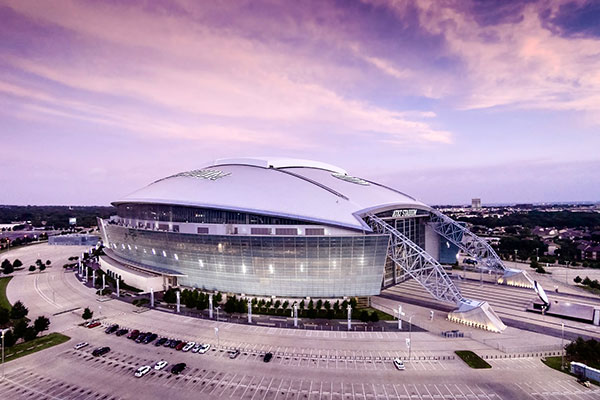
AT&T Stadium, Arlington, TX
2022 Cycle – 43 Home Matches – 24 unique cities
I can almost give US Soccer a pass on city and venue selection during the 2022 cycle, given the global circumstances at the time. That said, it’s interesting that they scheduled three consecutive home World Cup qualifiers in Ohio, with final round two matches in Columbus. Columbus has been a recurring choice, hosting multiple qualifiers in 2014, 2018, and 2022, handling one match each during both the semifinal and final rounds of qualifying in 2014 and 2018.

Lower.com, Columbus, Ohio
2018 Cycle – 47 Home Matches – 33 unique cities
During the 2018 cycle, the USMNT played in a wider variety of cities and venues. Aside from four matches in Carson, California for the January camp, they only repeated a location eleven times.

Dignity Health Sports Park, Carson, CA
2014 Cycle – 43 Home Matches – 29 unique cities
During the 2014 cycle, the USMNT repeated cities twelve times, but only two cities hosted more than two matches: Carson, California, where two of three games were for Camp Cupcake, and Kansas City, Kansas, which hosted three matches.

Children’s Mercy Park, Kansas City, Kansas
2010 Cycle – 35 Home Matches – 18 unique cities
One of the leanest home schedules in recent cycles saw the USMNT play in just 18 different cities, with 11 of them hosting only a single match. Over half of their home games were concentrated in four cities: Carson, California (7 matches); Chicago, Illinois (5 matches); and Foxborough, Massachusetts and Washington, D.C. (3 matches each).
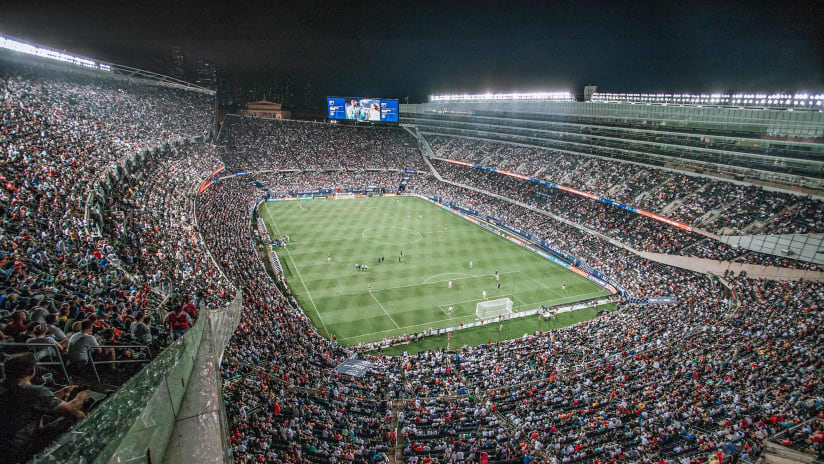
Soldier Field, Chicago, IL
2006 Cycle – 44 Home Matches – 24 unique cities
The USMNT played eight matches in Foxborough, Massachusetts—double the number held in the next two cities, Columbus, Ohio, and Miami, Florida, which each hosted four matches. Notably, the team has excelled in Foxborough, losing only once in 22 games played there.

Foxboro Stadium, Foxborough, MA
2002 Cycle – 38 Home Matches – 16 unique cities
During the 2002 cycle, California was clearly a preferred destination for the USMNT, hosting matches in five different cities across twelve games. Foxborough, Massachusetts, and Washington, D.C. each hosted five matches as well.

Rose Bowl Stadium, Pasadena, CA
1998 Cycle– 40 Home Matches – 21 unique cities
Washington D.C. was the city of choice for the USMNT during the 1998 cycle playing six matches. The USMNT would also play more than two matches in Los Angeles, California (5 matches), Foxborough, Massachusetts (4 matches) and Pasadena, California (3 matches) while playing only one match in twelve other cities.
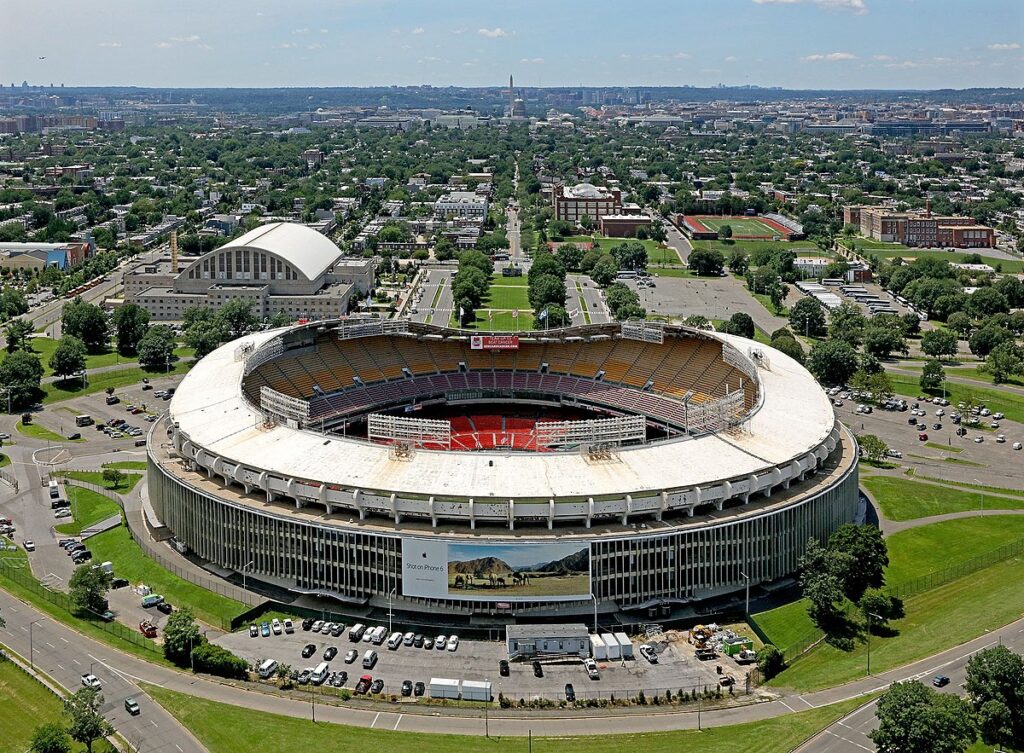
RFK Stadium, Washington, DC
Long Term Venue Strategy
While US Soccer may favor a single venue for most USMNT and USWNT matches, doing so would limit access for thousands of fans across the country. However, with the move to Georgia and the Arthur M. Blank U.S. Soccer National Training Center set to open in early 2026, ahead of the World Cup, it’s likely that future matches will focus on venues within three to four hours of Atlanta. We can expect the majority of games to continue taking place in roughly ten to twelve core cities.
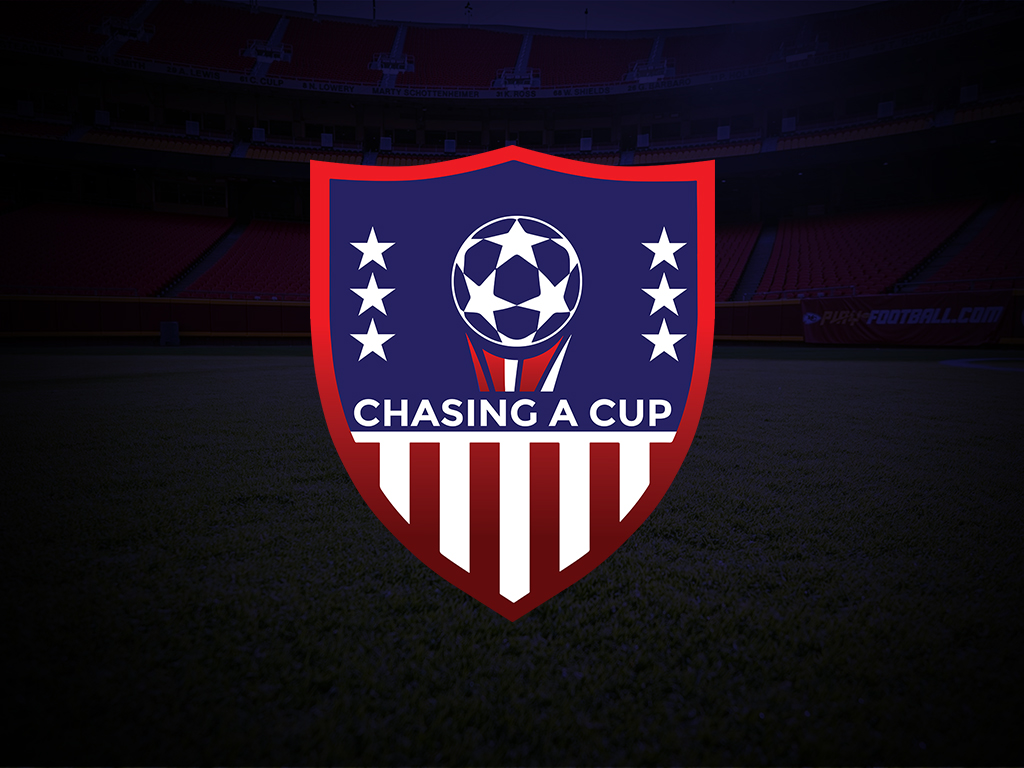

USL’s American Soccer Dream

From Maradona to Messi

One Home or Many? The Debate Over a Primary Venue for U.S. Soccer

Trending
-

 Club News1 year ago
Club News1 year agoAmerican Transfers: Stock Up & Stock Down
-
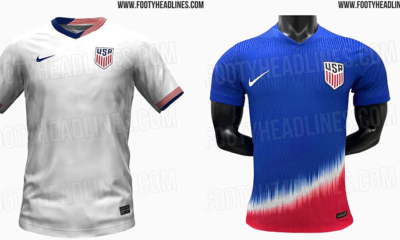
 USMNT2 years ago
USMNT2 years agoUSMNT Kits Come in Different Styles and Colors
-

 Club News6 years ago
Club News6 years agoJulian Vincente Araujo
-
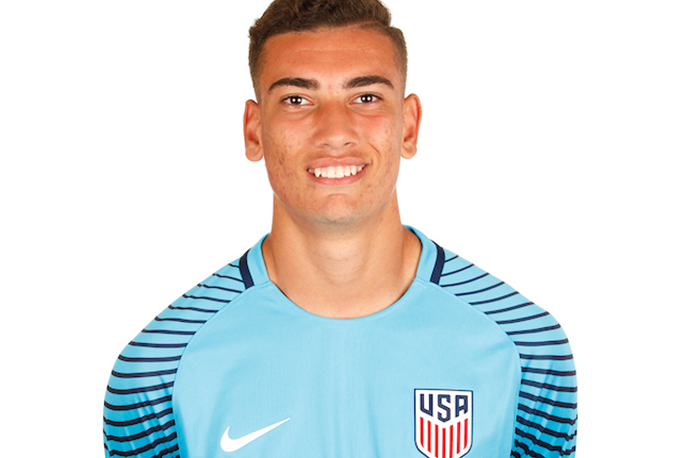
 Club News5 years ago
Club News5 years agoCJ dos Santos, Benfica
-

 USMNT5 years ago
USMNT5 years agoA Hidden Gem: Barça Residency Academy
-
USMNT3 years ago
World Cup Format History
-

 USMNT2 years ago
USMNT2 years agoIs the MLS Specifically Targeting Expansion to USL Cities?
-
USMNT6 years ago
MLS Quota

